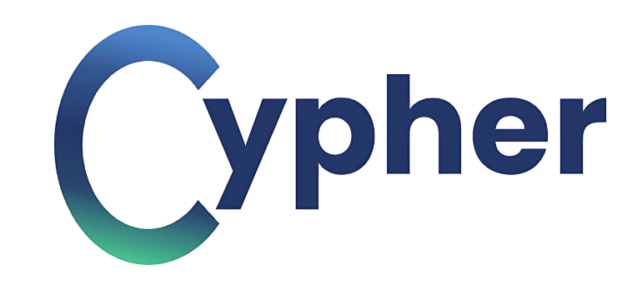
If you’re a CEO thinking about scaling sales, you’re probably picturing more reps, bigger marketing budgets, or doubling down on outbound campaigns.
But ask any SaaS leader who’s been through it, and you’ll hear the same thing: growth lives or dies by the strength of your finance team.
On the latest episode of Founder Files, Noel-Edouard Chenu, CEO of Boundless Digital, put it like this:
“Cash is still king. I’m tracking my cash flow daily, and growth is super important because a normal company is always moving, either decreasing or growing.”
Finance is what gives sales that growth runway. Cash flow visibility, margin discipline, and smarter budgeting are what make it possible to scale headcount and win bigger deals.
To learn more how forward-thinking finance leaders are stepping up as growth architects in SaaS, watch this:
Sales don’t grow in a vacuum; they grow once finance lays the foundation.
1. Finance gives sales the runway
Scaling sales takes cash. Without tight cash flow management, companies run out of oxygen before the new deals land.
- 82% of small businesses fail due to poor cash flow management (U.S. Bank).
- For SaaS companies, slow receivables or mismanaged burn can mean the difference between fueling growth, funding new sales reps, or stalling out.
Example:
Let’s say your SaaS business bills $5M annually (≈ $417K/month).
- If customers pay you in 60 days, you’re always 2 months behind on collecting revenue, about $834K locked up in accounts receivable.
- If you tighten collections to 45 days, you reduce that backlog by half a month, freeing up about $208K in working capital.
- At 30 days, you’re only 1 month behind, freeing up about $417K compared to the 60-day baseline.
Here’s what that looks like:
|
Days to collect receivables |
Monthly cash available |
|
60 days |
$0 |
|
45 days |
+$208K |
|
30 days |
+$417K |
That cash can fund sales growth through faster hiring, marketing experiments, product expansion, or simply extending runway to close bigger enterprise deals.
At Cypher, we’ve seen this play out again and again: better AR/AP systems → faster cash → sales teams that can scale. For more information on how to build this kind of visibility into your company’s finances, see our blogs Real-Time Financial Visibility for Startups and Why Real-Time Financial Visibility Is the New Standard for SaaS Growth.
2. Budgeting sales costs realistically
One of the toughest calls for CEOs: how much should we invest in sales right now? Over-invest, and burn skyrockets. Under-invest, and growth stalls.
Benchmarks can help set guardrails:
- “According to SaaS Capital’s 2025 benchmarks, median spend is 13% of ARR on sales and 8% on marketing, for a combined 21% of revenue (SaaS Capital)
- Another survey finds B2B SaaS startups average 15% on sales and 10% on marketing (25% total) (SaaStr)
- Some high-growth SaaS companies (especially those that are venture-backed) invest up to 30–50% of revenue into combined sales and marketing (simpletiger)
Where you land depends on runway and CAC payback. If customer acquisition costs don’t recover within 12–18 months, scaling sales too aggressively can drain cash. If payback is strong, you can lean toward the higher end of the range.
This is where finance earns its keep. At Cypher, we model CAC payback scenarios so CEOs know exactly how much sales spend their company can support, without overshooting burn.
3. Measuring sales efficiency as you scale
It’s not enough to track “how much we’re spending on sales.” The real question: is the spend efficient?
Here are the three metrics SaaS companies should be tracking:
- CAC payback = months it takes to recover the cost of acquiring a customer:
-
- Why it matters: Shorter payback = faster self-funding growth.
- Best-in-class: under 12 months.
- Warning sign: over 24 months.
- Why it matters: Shorter payback = faster self-funding growth.
- LTV:CAC ratio = the lifetime value of a customer compared to what it costs to acquire them.
-
- Why it matters: If a customer is worth 3x what you spent to win them, the math works. If it’s 1:1, you’re effectively lighting cash on fire.
- Healthy range: 3:1 is sustainable; <2:1 is risky.
- Sales efficiency (Magic Number) = new ARR generated ÷ S&M spend.
-
- Why it matters: This measures how effectively S&M dollars translate into recurring revenue. A 0.8x means $1 of spend is generating $0.80 of ARR every year, which compounds over time.
- Efficient if: >0.8.
- Strong signal: around 1.0 means every $1 spent creates $1 of new recurring revenue within a year.
- Why it matters: This measures how effectively S&M dollars translate into recurring revenue. A 0.8x means $1 of spend is generating $0.80 of ARR every year, which compounds over time.
At Cypher, we build dashboards that surface these metrics in real time. That way leadership isn’t guessing — they know whether to scale headcount or optimize existing spend. For more on why CAC payback is one of the most important metrics investors track, check out Why Founders Need to Master CAC Payback.
Success is a lease, and rent is due
Noel summed it beautifully:
“Success is a lease, and rent is due every month.”
That’s true for sales, for finance, and for growth. Each milestone is provisional. To keep moving forward, you need higher goals, constant visibility, and a clear sense of when to press the gas, or when to optimize.
At Cypher, we partner with SaaS, eCommerce, and service companies to make finance a growth engine. From cash flow visibility to CAC modeling to real-time sales efficiency metrics, we help founders and CEOs scale sales responsibly — without the hiring headaches of building a finance team from scratch.
If you’re ready to turn finance into your sales growth enabler, let’s talk.
Build your empire. We’ll crunch the numbers. – Courtesy of Cypher
